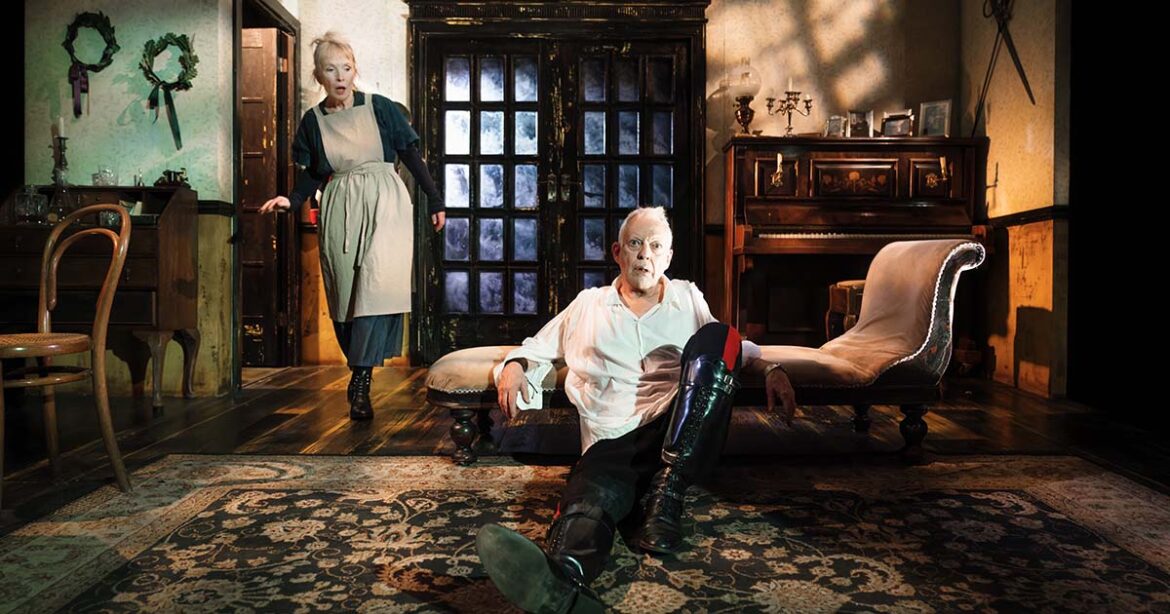Husband-and-wife team Lindsay Duncan and Hilton McRae dally with death in this macabre Cambridge theatre play threaded through with humour, says Miriam Balanescu
When we first meet Alice and Edgar, the husband and wife played by real-life star couple Lindsay Duncan (Le Week-End, About Time) and Hilton McRae (The French Lieutenant, Far From the Madding Crowd), the pair seem to just about be getting along in an off-kilter kind of co-habitation. Locked in a comedic camaraderie, the jokes catapulted between them conceal a darker undercurrent to their relationship – the blustery hatred between them is not yet apparent but will soon become painfully clear.
Trapped together on an island – and subject to its erratic wind and storms – Alice and Edgar’s marriage is both disconcertingly relatable and unnervingly abnormal, a marital mess. August Strindberg’s 1990 play was among the first theatrical portrayals of the often-claustrophobic dynamics of a longstanding relationship. The precursor to Edward Albee’s Who’s Afraid of Virginia Woolf?, despite first being performed over a century ago, his masterpiece feels timely and modern.
Shunned by their neighbours, Alice and Edgar’s relationship has been left to fester, but only below the surface. It’s the introduction of Katrin to the household, played by Peep Show’s Emily Bruni, that truly sends things spinning out of control. A cat and mouse game in which roles are reversed and Katrin is the pair’s plaything, hurled between them, begins. New to the island as matron of quarantine, Alice’s cousin has a long-buried history with the couple that is gradually untangled and, caught up in the disarray of their relationship, her sense of reality starts to slip.
While remaining largely faithful to Strindberg’s original play, playwright Rebecca Lenkiewicz has made one major change in her adaptation of The Dance of Death. The gender of Katrin is switched in this version from male to female, which means that though her allegiance oscillates between husband and wife, her sense of male companionship with Edgar is lost. Alice is layered with defiance and depth by Duncan, while McRae, with his chilling expression (heightened by off-green lighting which sweeps the stage), expertly captures the spectral ghoulishness of Edgar’s character – and stuns with his iconic deathly march.
The Dance of Death is an exploration of the meaning of life in light of suffering, the hellishness of isolation and how laughter can be the best medicine. The character of Alice, a former actress stolen from the stage by Edgar, brings to the fore the metatheatrical element of Strindberg’s play, which questions whether we need an audience – an outsider – to regain a sense of self, something we all lacked during the pandemic. This sense of seclusion (and its emotional toll) is expertly built up by the play’s production team, with the light rippling across the stage as the characters progress through the day and a very real-feeling storm brewing beyond their four walls.
Poignant, poetic and sometimes downright bizarre, Duncan, McRae and Bruni transfix in this battle of power and love.
The Dance of Death runs at The Cambridge Arts Theatre from 14 to 18 June at 7.30pm.

